Monticello
From Wikipedia, the free encyclopedia
This article is about the Jefferson residence. For other uses, see Monticello (disambiguation).
| Monticello | |
|---|---|
 | |
| Location | Albemarle County, nearCharlottesville, Virginia, USA |
| Coordinates | 38°00′37.01″N78°27′08.28″WCoordinates: 38°00′37.01″N 78°27′08.28″W |
| Built | 1772 |
| Architect | Thomas Jefferson |
| Architectural style(s) | Neoclassical, Palladian |
| Governing body | The Thomas Jefferson Foundation |
| Official name: Monticello and the University of Virginia in Charlottesville | |
| Type | Cultural |
| Criteria | i, iv, vi |
| Designated | 1987 (11th session) |
| Reference no. | 442 |
| Region | Europe and North America |
| Designated | October 15, 1966[1] |
| Reference no. | 66000826 |
| Designated | December 19, 1960[2] |
| Designated | September 9, 1969[3] |
| Reference no. | 002-0050 |
Monticello was the primary plantation of Thomas Jefferson, the third President of the United States, who, after inheriting quite a large amount of land from his father, started building Monticello when he was 26 years old. Located just outside Charlottesville, Virginia, in the Piedmont region, the plantation was originally 5,000 acres (20 km2), used for extensive cultivation of tobacco and mixed crops, with labor by slaves. Like other planters, Jefferson shifted from tobacco cultivation to a wheat plantation to respond to changing markets.
The house, which Jefferson designed, was based on the neoclassical principles described in the books of the Italian Renaissance architect Andrea Palladio. He reworked it through much of his presidency to include design elements popular in late 18th-century Europe. It contains many of his own design solutions. The house is situated on the summit of an 850-foot (260 m)-high peak in the Southwest Mountains south of the Rivanna Gap. Its name comes from the Italian "little mountain". The plantation, in time, included numerous outbuildings for specialized functions, a nailery, and quarters for domestic slaves along Mulberry Row near the house; gardens for flowers, produce, and Jefferson's experiments in plant breeding; plus tobacco fields and mixed crops. Cabins for field slaves were located farther from the mansion.
At Jefferson's direction, he was buried on the grounds, an area now designated as the Monticello Cemetery, which is owned by the Monticello Association, a lineage society of his descendants through Martha Wayles Skelton Jefferson.[4] After Jefferson's death, his daughter Martha Jefferson Randolph sold the property. In 1834 it was bought by Uriah P. Levy, a commodore in the U.S. Navy, who admired Jefferson and spent his own money to preserve the property. His nephew Jefferson Monroe Levy took over the property in 1879; he also invested considerable money to restore and preserve it. He held it until 1923, when he sold it to the Thomas Jefferson Foundation, which operates it as a house museum and educational institution. It has been designated a National Historic Landmark. In 1987 Monticello and the nearby University of Virginia, also designed by Jefferson, were together designated a UNESCO World Heritage Site.
Contents
[hide]Design and building[edit]
Jefferson's home was built to serve as a plantation house, which ultimately took on the architectural form of a villa. It has many architectural antecedents but Jefferson went beyond them to create something very much his own. He consciously sought to create a new architecture for a new nation.[5]
Work began on what historians would subsequently refer to as "the first Monticello" in 1768, on a plantation of 5,000 acres (2,000 hectares). Jefferson moved into the South Pavilion (an outbuilding) in 1770, where his new wife Martha Wayles Skelton joined him in 1772. Jefferson continued work on his original design, but how much was completed is of some dispute.[5]
After his wife's death in 1782, Jefferson left Monticello in 1784 to serve as Minister of the United States to France. During his several years' in Europe, he had an opportunity to see some of the classical buildings with which he had become acquainted from his reading, as well as to discover the "modern" trends in French architecture that were then fashionable in Paris. His decision to remodel his own home may date from this period. In 1794, following his service as the first U.S. Secretary of State (1790–93), Jefferson began rebuilding his house based on the ideas he had acquired in Europe. The remodeling continued throughout most of his presidency (1801–09).[6] Although generally completed by 1809, Jefferson continued work on the present structure until his death in 1826.
Jefferson added a center hallway and a parallel set of rooms to the structure, more than doubling its area. He removed the second full-height story from the original house and replaced it with a mezzanine bedroom floor. The interior is centered on two large rooms, which served as an entrance-hall-museum, where Jefferson displayed his scientific interests, and a music-sitting room.[5] The most dramatic element of the new design was an octagonal dome, which he placed above the west front of the building in place of a second-story portico. The room inside the dome was described by a visitor as "a noble and beautiful apartment," but it was rarely used—perhaps because it was hot in summer and cold in winter, or because it could only be reached by climbing a steep and very narrow flight of stairs. The dome room has now been restored to its appearance during Jefferson's lifetime, with "Mars yellow" walls and a painted green floor.[7]
Before his death, Monticello had begun to show signs of disrepair. The attention Jefferson's university project in Charlottesville demanded, and family problems diverted his focus. The most important reason for the mansion's deterioration was his accumulating debts. In the last few years of Jefferson's life, much went without repair in Monticello. A witness, Samuel Whitcomb Jr., who visited Jefferson in 1824, thought it run down. He said, "His house is rather old and going to decay; appearances about his yard and hill are rather slovenly. It commands an extensive prospect but it being a misty cloudy day, I could see but little of the surrounding scenery."[8]
History[edit]
After Jefferson died on July 4, 1826, his only surviving daughter Martha Jefferson Randolph inherited Monticello. The estate was encumbered with debt and Martha Randolph had financial problems in her own family because of her husband's mental illness. In 1831 she sold Monticello to James Turner Barclay, a local apothecary. Barclay sold it in 1834 to Uriah P. Levy, the first Jewish Commodore (equivalent to today's admiral) in the United States Navy. A fifth-generation American whose family first settled in Savannah, Georgia, Levy greatly admired Jefferson. He used his private funds to repair, restore and preserve the house. During the American Civil War, the house was seized and sold by the Confederate government because it was owned by a Northern officer under the sequestration terms of the Alien Enemies Act of 1861 which called for the removal of all residents of northern states from the Confederacy and authorized the Confederate States to take possession and ownership of property in the South owned by ousted northerners. Uriah Levy's estate recovered the property after the war.[9]
Levy's heirs argued over his estate, but their lawsuits were settled in 1879, when Uriah Levy's nephew, Jefferson Monroe Levy, a prominent New York lawyer, real estate and stock speculator (and later member of Congress), bought out the other heirs for $10,050, and took control of the property. Like his uncle, Jefferson Levy commissioned repairs, restoration and preservation at Monticello, which had been deteriorating seriously while the lawsuits wound their way through the courts in New York and Virginia. Together, the Levys preserved Monticello for nearly 100 years.
In 1923, a private non-profit organization, the Thomas Jefferson Foundation, purchased the house from Jefferson Levy with funds raised by Theodore Fred Kuper and others. They managed additional restoration under architects including Fiske Kimball and Milton L. Grigg.[10] Since that time, other restoration has been done at Monticello.
The Foundation operates Monticello and its grounds as a house museum and educational institution. Visitors can wander the grounds, as well as tour rooms in the cellar and ground floor. More expensive tour pass options include sunset hours, as well as tours of the second floor and the third floor including the iconic dome. [11]
Monticello is a National Historic Landmark. It is the only private home in the United States to be designated a UNESCO World Heritage Site. Included in that designation are the original grounds and buildings of Jefferson's University of Virginia. From 1989 to 1992, a team of architects from the Historic American Buildings Survey (HABS) of the United States created a collection of measured drawings of Monticello. These drawings are held by the Library of Congress.
Among Jefferson's other designs are Poplar Forest, his private retreat near Lynchburg (which he intended for his daughter Maria, who died at age 25); the University of Virginia, and the Virginia State Capitol inRichmond.
Decoration and furnishings[edit]
Much of Monticello's interior decoration reflect the personal ideas and ideals of Jefferson.[12]
The original main entrance is through the portico on the east front. The ceiling of this portico incorporates a wind plate connected to a weather vane, showing the direction of the wind. A large clock face on the external east-facing wall has only an hour hand since Jefferson thought this was accurate enough for outdoor laborers (slaves).[13] The clock reflects the time shown on the "Great Clock", designed by Jefferson, in the entrance hall. The entrance hall contains recreations of items collected by Lewis and Clark on the cross-country expedition commissioned by Jefferson to explore the Louisiana Purchase. Jefferson had the floorcloth painted a "true grass green" upon the recommendation of artist Gilbert Stuart, so that Jefferson's "essay in architecture" could invite the spirit of the outdoors into the house.
The south wing includes Jefferson's private suite of rooms. The library holds many books from his third library collection. His first library was burned in an accidental plantation fire, and he 'ceded' (or sold) his second library in 1815 to the United States Congress to replace the books lost when the British burned the Capitol in 1814.[14] This second library formed the nucleus of the Library of Congress.[14]
As "larger than life" as Monticello seems, the house has approximately 11,000 square feet (1,000 m2) of living space.[15] Jefferson considered much furniture to be a waste of space, so the dining room table was erected only at mealtimes, and beds were built into alcoves cut into thick walls that contain storage space. Jefferson's bed opens to two sides: to his cabinet (study) and to his bedroom (dressing room).[16]
The west front (illustration) gives the impression of a villa of modest proportions, with a lower floor disguised in the hillside.
The north wing includes two guest bedrooms and the dining room. It has a dumbwaiter incorporated into the fireplace, as well as dumbwaiters (shelved tables on castors) and a pivoting serving door with shelves.
Slave quarters on Mulberry Row[edit]
Jefferson located one set of his slaves' quarters on Mulberry Row, a one-thousand foot road of slave, service, and industrial structures. Mulberry Row was situated three-hundred feet (100 m) south of Monticello, with the slave quarters facing the Jefferson mansion. These slave cabins were occupied by the slaves who worked in the mansion or in Jefferson's manufacturing ventures, and not by those who labored in the fields.
Archaeology of the site shows that the rooms of the slave cabins were much larger in the 1770s than in the 1790s. Researchers disagree as to whether this indicates that more slaves were crowded into a smaller spaces, or that fewer people lived in the smaller spaces.[17] Earlier slave houses had a two-room plan, one family per room, with a single, shared doorway to the outside. But from the 1790s on, all rooms/families had independent doorways. Most of the cabins are free-standing, single-room structures.[17]
By the time of Jefferson's death, some slave families had labored and lived for four generations at Monticello.[17] Six families and their descendants were featured in the exhibit, Slavery at Jefferson's Monticello: Paradox of Liberty (January to October 2012) at the Smithsonian's National Museum of American History, which also examines Jefferson as slaveholder. Developed as a collaboration between the National Museum of African American History and Culture and Monticello, it is the first exhibit on the national mall to address these issues.[18]
In February 2012, Monticello opened a new outdoor exhibit on its grounds: Landscape of Slavery: Mulberry Row at Monticello, to convey more about the lives of the hundreds of slaves who lived and worked at the plantation.[19]
Outbuildings and plantation[edit]
The main house was augmented by small outlying pavilions to the north and south. A row of outbuildings (dairy, a washhouse, store houses, a small nail factory, a joinery etc.) and slave's quarters (log cabins), known as Mulberry Row, lay nearby to the south. A stone weaver's cottage survives, as does the tall chimney of the joinery, and the foundations of other buildings. A cabin on Mulberry Row was, for a time, the home of Sally Hemings, the household slave who is widely believed to have had a 38-year relationship with the widower Jefferson and to have borne six children by him, four of whom survived to adulthood. The genealogist Helen F.M. Leary concluded that "the chain of evidence securely fastens Sally Hemings's children to their father, Thomas Jefferson."[20] Later Hemings lived in a room in the "south dependency" below the main house.
On the slope below Mulberry Row, slaves maintained an extensive vegetable garden for Jefferson and the main house. In addition to growing flowers for display and producing crops for eating, Jefferson used the gardens of Monticello for experimenting with different species. The house was the center of a plantation of 5,000 acres (2,000 ha) tended by some 150 slaves. There are also two houses included in the whole.
Programming[edit]
In recent decades, the TJF has created programs to more fully interpret the lives of slaves at Monticello. Beginning in 1993, researchers interviewed descendants of Monticello slaves for the Getting Word Project, a collection of oral history that provided much new insight into the lives of slaves at Monticello and their descendants. (Among findings were that no slaves adopted Jefferson as a surname, but many had their own surnames as early as the 18th century.[21])
New research, publications and training for guides has been added since 2000, when the Foundation's Research Committee concluded it was highly likely that Jefferson had fathered Sally Hemings' children.
Some of Mulberry Row has been designated as archeological sites, where excavations and analysis are revealing much about slave life at the plantation. In the winter of 2000-2001, the slave burial ground at Monticello was discovered. In the fall of 2001, the Thomas Jefferson Foundation held a commemoration of the burial ground, in which the names of known slaves of Monticello were read aloud. Additional archeological work is providing information about African-American burial practices.[22]
In 2003 Monticello welcomed a reunion of descendants of Jefferson from both the Wayles' and Hemings' sides of the family. It was organized by the descendants, who have created a new group called the Monticello Community.[23] Additional and larger reunions have been held.
Land purchase[edit]
In 2004, the trustees acquired Mountaintop Farm (also known locally as Patterson's or Brown's Mountain), the only property that overlooks Monticello. Jefferson had called the taller mountain Montalto. To prevent development of new homes on the site, the trustees spent $15 million to purchase the property. Jefferson had owned it as part of his plantation, but it was sold off after his death. In the 20th-century, its farmhouses were divided into apartments for many University of Virginia students. The officials at Monticello had long considered the property an eyesore, and planned to buy it when it came on the market.[24]
Architecture[edit]
Main article: Jeffersonian architecture
The house is similar in appearance to Chiswick House, a Neoclassical house inspired by the architect Andrea Palladio built in 1726-9 in London.
Representation in other media[edit]
Monticello was featured in Bob Vila's A&E Network production, Guide to Historic Homes of America,[25] in a tour which included Honeymoon Cottage and the Dome Room, which is open to the public during a limited number of tours each year.
Replicas[edit]
A replica has now been built in Somers, Connecticut. It can be seen on Rte 186 also known as Hall Hill Rd Oct. 2014.[citation needed]
A replica of Monticello was constructed in Chickasha, Oklahoma.[citation needed]
The entrance pavilion of the Naval Academy Jewish Chapel at Annapolis is modeled on Monticello.[citation needed]
Chamberlin Hall at Wilbraham & Monson Academy in Wilbraham, Massachusetts, built in 1962 and modeled on Monticello, serves as the location of the Academy's Middle School.[26]
Scheduled to be complete in July, 2015, Dallas Baptist University is building one of the largest replicas of Monticello known to date. The building will be approximately 23,000 square feet, and will be the home of the Gary Cook School of Leadership.[27]
Panoramas[edit]
Gallery[edit]
Legacy[edit]
Monticello's image has appeared on U.S. currency and postage stamps. An image of the west front of Monticello by Felix Schlag has been featured on the reverse of the nickel minted since 1938 (with a brief interruption in 2004 and 2005, when designs of the Westward Journey series appeared instead). It was also used as the title for the 2015 play Jefferson's Garden, which centred on his life.
Monticello also appeared on the reverse of the two-dollar bill from 1928 to 1966, when the bill was discontinued. The current bill was introduced in 1976 and retains Jefferson's portrait on the obverse but replaced Monticello on the reverse with an engraved modified reproduction of John Trumbull's painting Declaration of Independence. The gift shop at Monticello hands out two-dollar bills as change.
See also[edit]
References[edit]
- ^ "National Register Information System". National Register of Historic Places. National Park Service. 2006-03-15.
- ^ "Monticello (Thomas Jefferson House)". National Historic Landmark summary listing. National Park Service. Retrieved 2008-06-27.
- ^ "Virginia Landmarks Register". Virginia Department of Historic Resources. Retrieved 05-12-2013. Check date values in:
|accessdate=(help) - ^ The Monticello Cemetery, Retrieved December 28, 2010.
- ^ a b c SAH Archipedia, eds. Gabrielle Esperdy and Karen Kingsley, Charlottesville: UVaP, 2012. Online. http://sah-archipedia.org/buildings/VA-01-CH48. Accessed 2013-03-16.
- ^ "Monticello". National Park Service, US Dept of the Interior. Retrieved30 April 2011.
- ^ Kern, Chris. "Jefferson's Dome at Monticello". Retrieved 2009-07-10.
- ^ Peden, William (1949). "A Book Peddler Invades Monticello". The William and Mary Quarterly 6 (4): 631–636. doi:10.2307/1916755.
- ^ Marc Leepson, Saving Monticello: The Levy Family's Epic Quest to Rescue the House That Jefferson Built (New York: Free Press, 2001, p. 94
- ^ Fleming, Thomas. "The Jew Who Helped Save Monticello", The Jewish Digest, February 1974: 43–49.
- ^ "Tickets and Tours". Monticello. Retrieved 2015-07-28.
- ^ "A Day in the Life of Thomas Jefferson: Sunrise Design and Decor". Monticello.org. Retrieved 2010-07-09.
- ^ "A Day in the Life of Thomas Jefferson: Entrance Hall - Design and Decor". Monticello.org. Retrieved 2010-07-09.
- ^ a b "History - About the Library (Library of Congress)". Loc.gov. 1987-09-14. Retrieved 2010-07-09.
- ^ The House FAQ - Monticello website
- ^ "Jefferson's Alcove Bed". Monticello.org. Retrieved 2010-07-09.
- ^ a b c "Changing Landscapes: Slave Housing at Monticello by Fraser D. Neiman, Director of Archeology for the Thomas Jefferson Foundation". pbs.org. Retrieved 2011-03-26.
- ^ http://slavery.


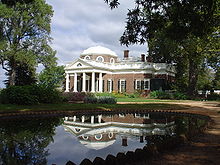
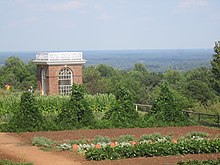




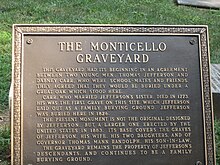
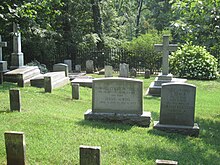




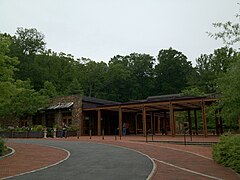




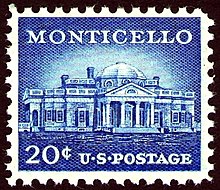
No comments:
Post a Comment